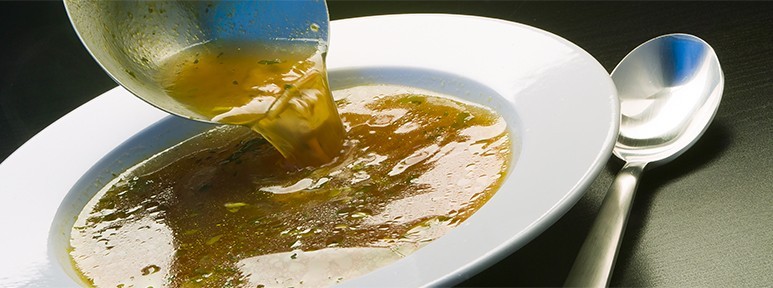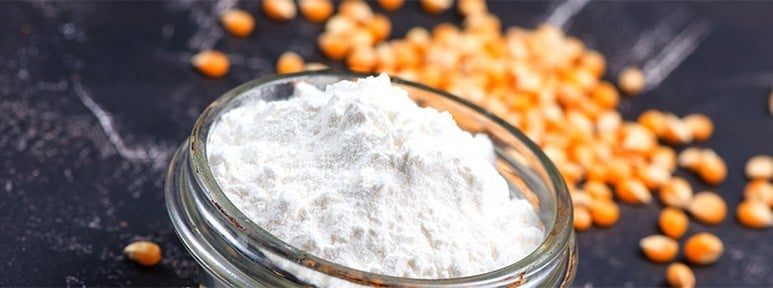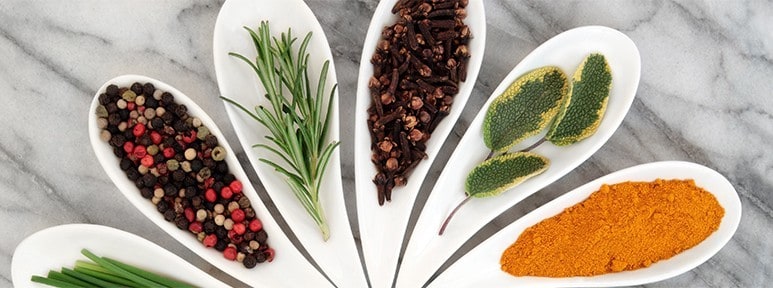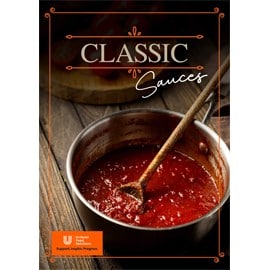If you’re a newcomer to the kitchen, you might scoff at sauces. You know, that starchy liquid that other chefs like to drizzle over their finished dish? Sometimes they’re even used as decorative elements on the plate. So how important can the use of sauces in food preparation be?
As it turns out, pretty darn important. The truth is that sauces are like little keys that help to unlock the secret potential of ingredients. Imagine a world where steak is served completely plain without a creamy béarnaise or an earthy peppercorn sauce to liven it up; it’s like watching a movie with no sound on. In fact, it’s so important that traditional French kitchens would employ one chef (called a saucier) to do nothing else but just make sauces.
Sauce are thickened liquids that enhance and complement ingredients through flavour, texture and moisture, and can also make a dish look more visually appealing
Sauce can be served cold (mayonnaise), lukewarm (pesto), or warm (Béchamel), and can even be savoury or sweet. At its very base, sauces should complement the flavours of the main ingredient, as well as its texture and cooking method.
Making Basic Sauces
We’re not going to lie. Making sauces is a long and tedious process; they need to be flavourful and concentrated yet not overpowering, all while balancing a very precise consistency and temperature.
Otherwise, they’re probably no good and should be headed straight to the bin. However, the beauty of creating sauces also lies in the process. There are an endless number of sauces you can create and discover on your own. All you need is some imagination.
Here’s a rundown on what actually goes into making a sauce, and how to create new ones by layering it with different flavours.

Liquid
The main component of a sauce is its liquid base. This is usually some type of stock, dairy product (milk, cream or butter) or tomatoes mashed up into a liquid consistency.

Thickening agent
The thickening agent helps to increase the viscosity of the liquid without changing the main flavour profile too much. There are various types of thickening agents such as roux (clarified butter and flour), starches and a liaison. Starches such as cornstarch and arrowroot are commonly used, while a liaison is a mixture of egg yolks and cream that thickens the sauce while giving it a rich mouthfeel.

Seasoning and flavours
The combination of the liquid and its thickening agent will give you a leading sauce. Once you have that, it’s time to layer with flavour. The addition of herbs, spices, essences and liquor produce secondary sauces, and this is where you can get creative.
Evolving classical sauces
Chefs trained in Western cuisine would immediately be familiar with the fundamental French sauces, more affectionately known as the 5 Mother Sauces.
What are the 5 Mother Sauces?
Mother sauces was conceived in the 18th century, when a lack of refrigeration meant that foods would spoil quickly. Hence, sauces were used to mask the flavor of meats, poultry and seafood that were no longer as fresh. The five mother sauces include béchamel sauce, veloute sauce, brown or Espagnole sauce, Hollandaise sauce and tomato sauce.
These sauces make up the building blocks for many secondary sauces to be birthed from. Think of them as the base of a pyramid that allows for an infinite number of sauces to be built upon them. For example, add a little dash of finely chopped tarragon to your hollandaise and voila, you have a béarnaise sauce.
Here’s a guide to the 5 Mother Sauces and how you can evolve them to create other sauces:

Hollandaise Sauce
A popular Mother Sauce, Hollandaise sauce is an emulsion of egg yolk and liquid butter, usually seasoned with lemon juice, salt and pepper. It is often used for fish, steak, gratin, thermidor and Eggs Benedict.
Turn it into Béarnaise sauce by adding finely chopped tarragon, wine vinegar, lemon juice and cayenne pepper.

Tomato Sauce
Made largely out of tomatoes, tomato sauce can also be mixed with onions and garlic. This versatile sauce goes well with pasta, meats and vegetables, and is often used for pizza bases.

Béchamel Sauce
Known as the white sauce, Béchamel is a milk-based sauce that’s thickened with white roux.
Turn it into cheese sauce by adding cheddar cheese, dry mustard, Worcestershire sauce and season it with cayenne pepper.

Veloute Sauce
A light, reduced stock that’s thickened with a white roux. Veloute sauce is good for vegetable, chicken and fish.
Turn it into herb white wine sauce by adding white wine, cream, butter, fresh herbs, season and lemon juice.

Espagnole sauce
A fortified brown veal stock sauce that’s thickened with brown roux, espagnole sauce goes well with meat.
Turn it into mushroom sauce by adding sliced fresh mushrooms, minced shallots, sherry, lemon juice and butter.
After you’ve mastered these basic Western sauces, it’s time to get creative in the kitchen and experiment to create your own signature sauce! Alternatively, if you’re looking for sauces that can be prepared quickly in a busy kitchen, there are many sauce options by Unilever Food Singapore.

How to Create Your Own Sauce from Classic Sauces
Get ideas to create your own signature sauces and incorporate them into your dishes with our recipe ebook! Also find out which sauce and meat pairs well with other to create your own signature dishes that keeps your guests coming back for more.